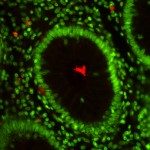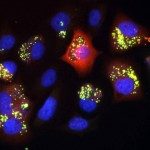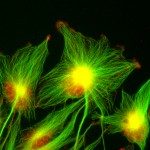Lien vers Pubmed [PMID] – 16172124
J. Biol. Chem. 2005 Nov;280(46):38648-56
Nod1 is an intracellular pattern recognition molecule activated following bacterial infection, which senses a specific muropeptide (l-Ala-d-Glu-meso-DAP (diaminopimelic acid); “Tri(DAP)”) from peptidoglycan. Here we investigated the molecular basis of Tri(DAP) sensing by human (h) Nod1. Our results identified the domain responsible for Tri(DAP) detection in the center of the concave surface of hNod1 leucine-rich repeat domain. Amino acid residues critical for sensing define a contiguous surface patch that is largely conserved in Nod1 proteins from different species. Accordingly, the distinct specificities of human versus murine Nod1 toward muropeptide detection were also found to lie in this central cleft. Several splicing variants of Nod1 lacking repeats 7-9 have been characterized recently, the relative balance of which is thought to correlate with the onset of asthma or inflammatory bowel disease. We demonstrated that these isoforms failed to transduce NF-kappaB activation upon muropeptide stimulation. This study provided insights into the molecular mechanisms responsible for the detection of bacterial peptidoglycan by Nod1 and suggested that defects in Nod1-dependent peptidoglycan sensing may contribute to elicit certain inflammatory disorders.


